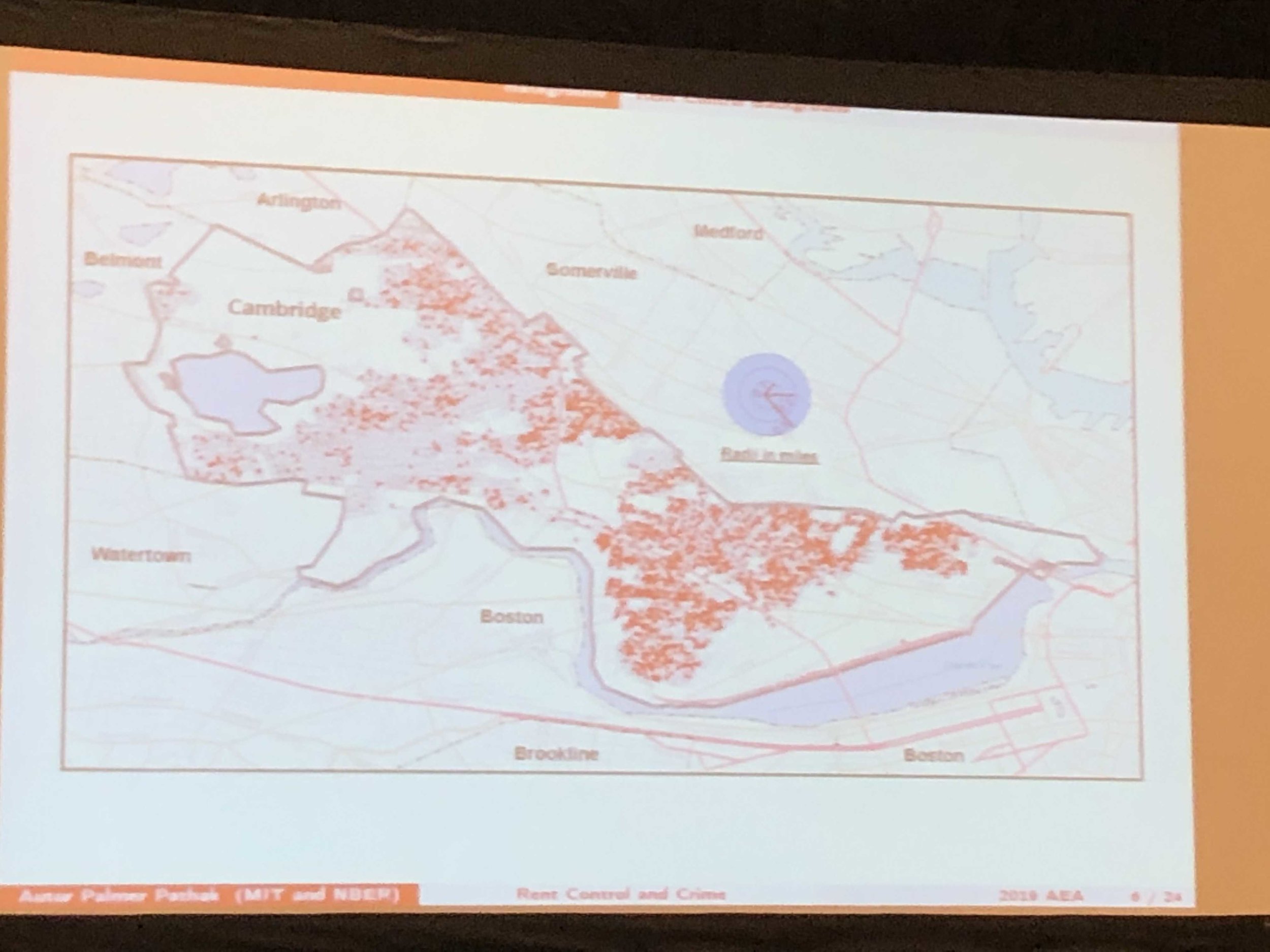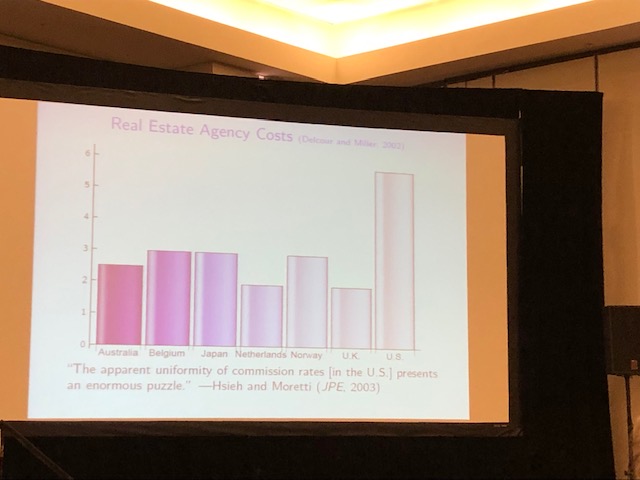Observations from the American Economic Association Annual Meeting
Last weekend, Sophie and I attended the 2019 American Economic Association Annual Meeting in Atlanta, Georgia. AEA brings together thousands of economists from across the world for a weekend of lectures, networking, hiring, reunions, and fun with friends old and new. The atmosphere is enthusiastic, respectful and curious. Each day at AEA, I have a small sense of wonder because it is possible that I might unexpectedly hear an argument that changes my mind. Remarkably, the cost of admission for this three-day world-class event is a mere $75.00. What a bargain. I attended many talks, and I'm delighted to share some of my observations with you.
Labor Economics
Work of the Past, Work of the Future; David Autor
David Autor gave the annual Richard Ely Lecture which focused on topics including the economic returns to education by location, urban/rural divide and speculates (with data) on the future of the labor market. David began by noting that the decline in inter-state mobility, which has been widely discussed in the press has been something of an economic puzzle. It is puzzling because standard theory suggests that people will move from low opportunity areas (low population density areas) to higher opportunity areas (high population density areas). Before attending this talk, the leading explanation for this puzzle was that rents are too high in cities for low skill people to move there. Why are rents high? Because cities often have significant supply restrictions on new housing starts, which leads to supply constraints and high rents. Thus pricing out low skilled people from moving to opportunity, so the story goes.
David’s talk presents a much more nuanced view of this story and even a novel partial solution to this puzzle. Using data on wage premiums for people with different levels of education in both low and high population density areas. He found that while people with a high school degree and below (non-college people) used to earn a wage premium in cities relative to rural areas in the 1980s and 1990s, however by the 2010s, they no longer do. Further, he shows that people with college degrees and above tend to move to high-density areas and stay there (in contrast to the out-migration we used to see). In effect, he concludes that the reason there is less inter-state mobility is because non-college people do not have superior economic opportunities in cities relative to rural areas.
I found these results somewhat disheartening because it implies that people with lower levels of education do not have opportunities to move to cities and receive a wage premium for their skills and there is already limited opportunity in low-density areas for low skilled people.
Macroeconomics and Finance
Joint Interview with Ben Bernanke, Timothy Geithner, Henry Paulson
Ten years after the financial crisis, three of the most influential fiscal and monetary policymakers of the time held a public conversation about their memories of the crisis. Early in the talk, the interviewer posed the question, why did you choose to save Bear, but not Lehman? They explained that while JP Morgan was willing to acquire Bear (with substantial Fed support) early on in 2008. The US Government was not able to find a buyer for Lehman toward the end of 2008. While Barclays did come close, they were not able to consummate the transaction. They were resolute in that the same process was used in both cases. Paulson also, rather candidly, noted that he intentionally misrepresented the seriousness of the crisis to the public in late 2008 early 2009 (with full support of the President), saying that the government decided "not to throw gasoline on the fire" and further erode the public's confidence in the government's ability to manage the crisis. We should continue to be skeptical of our public servants' public statements. Also, B-G-P wanted to emphasize that the government's ability to come together in a crisis was at first begrudging, TARP measures were unpopular in Congress when introduced and failed. However, America came together in the end with an aid package, TARP was passed, QE was approved, and we socialized our losses.
Investing
Trading and Arbitrage in Cryptocurrency Markets, Igor Makarov, Antoinette Schoar
Using a proprietary data set from 34 exchanges in 19 countries accounting for 85% of trading volume, Igor and Antoinette identified tradable arbitrage. These observations seemingly violate the strong form of the efficient market hypothesis. They noticed that these spreads were wider across exchanges in different countries relative to spreads on exchanges within a particular country. This may imply that barriers to inter-country capital mobility may explain the mispricing.
Furthermore, they noted that the width of the spreads is correlated with Bitcoin bull markets; the more excitement about cryptoassets, the more demand for leverage via derivatives (wider spreads). Interestingly, they estimate relatively low transaction costs at 50 to 75 basis points. Igor and Antoinette also mentioned that there are significant barriers for institutional investors (managing external capital) from investing in cryptoassets, but that proprietary investment firms are active in these markets.
Real Estate
What Drove the 2003-2006 House Price Boom and Subsequent Collapse? Disentangling Competing Explanations; John Griffin, Samuel Kruger, Gonzalo Maturana
There are two primary explanations for what caused the housing boom during the early 2000s: 1. credit supply and 2. speculation. The authors attempt to explain housing prices with two sets of variables that are more indicative of one explanation or the other. To illustrate a credit supply story, they use the share of sub-prime lenders as a percent of total lenders in a given area. To explain a speculation story, they considered the fraction of mortgages that were non-owner occupied, as a percent of total mortgages in a given area as well as considering percent of homes purchased by an out of town buyer. These are just the flavor of the explanations considered (seven total). Their results indicated that a credit supply story better explains the variation in home prices. One surprise that came out of this research was that there was no observed year on year momentum in house prices. The authors' main concern about their results is that perhaps credit supply is picking up because lenders are anticipating price increases. It may be impossible to disentangle speculation from credit suppliers' decision making process.
Fun Fact on Urban Economics from Edward Glaeser
The best single predictor of gentrification in the US is the number of Yelp reviews of laundromats in an area.
Best food in Atlanta: Gus's
It was so good that we went two days in a row!
AEA is in San Diego next year, hope to see you there!





